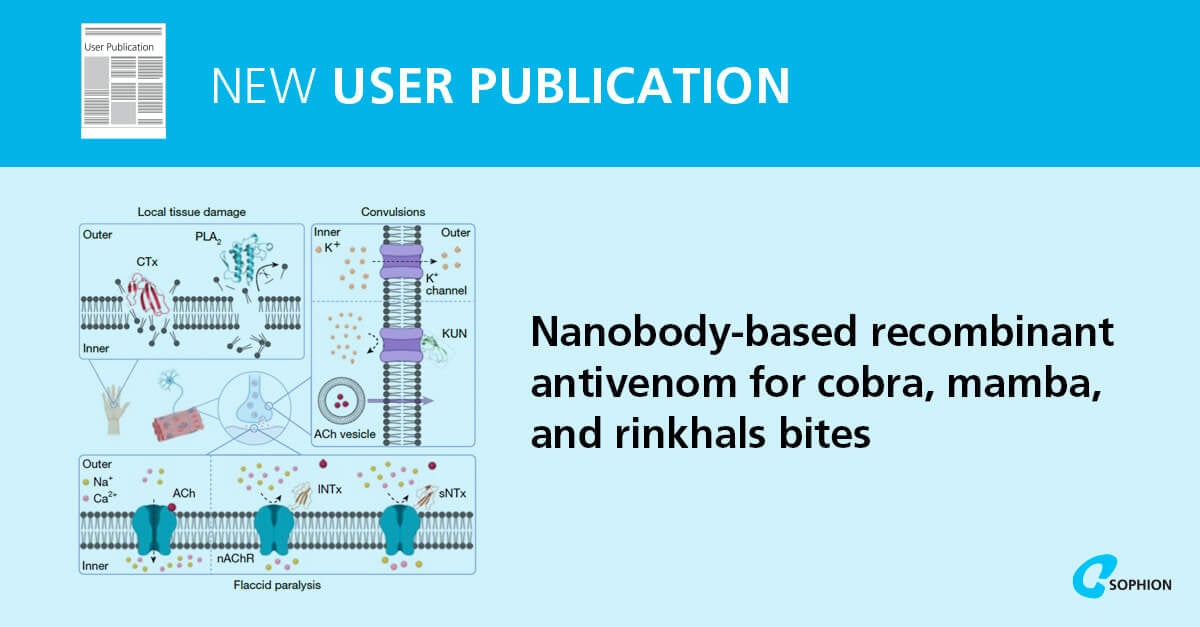
Antivenom nanobodies offer breakthrough protection against African snakebites
For their 2nd Nature paper of 2025, Sophion’s Dr. Kim Boddum has co-authored another seminal snakebite antivenoms paper in the ever-fruitful collaboration driven by Profs. Andreas Laustsen & Tim Jenkins’ labs at DTU. The new study (Ahmadi & Burlet et al., 2025) reports the first recombinant, product-ready snakebite antivenom able to neutralize every major African elapid species, including cobras, mambas and a rinkhal. The work shows that advanced antivenom nanobodies can outperform existing plasma-derived products while offering scalable, animal-free manufacturing.
From bench to bite: proof that translational potency works
Dr. Kim Boddum’s contribution used the Qube automated patch clamp (APC) electrophysiology to measure how well candidate nanobodies blocked key neurotoxins from disrupting nicotinic acetylcholine receptor (nAChR) currents. Remarkably, this in vitro potency translated directly into protection in vivo: the same VHH antibodies prevented lethality and paralysis in mouse models across 17 African elapid species.
A defined, ethical alternative
Developed from eight llama- and alpaca-derived VHH fragments, the recombinant cocktail neutralizes seven major toxin families responsible for nerve and tissue damage. Beyond preventing death, it also markedly reduced local dermonecrosis, something traditional serums rarely achieve. Because the antibodies are made recombinantly, future production can be entirely animal-free, consistent, and potentially far more affordable.
A platform for the future
The findings show that a small, rationally designed antibody mix can match the complexity of whole-serum antivenoms. The modular nanobody approach sets the stage for next-generation biologics targeting other venomous species and even other complex toxin-driven diseases.
Congratulations to Kim, Andreas, Tim & all authors in this groundbreaking collaboration with DTU, UNAM, University of Northern Colorado, Liverpool School of Tropical Medicine, Liverpool University, University of Bristol, Scripps Research Institute & Lancaster University.
The link includes the first Nature paper published earlier this year..
